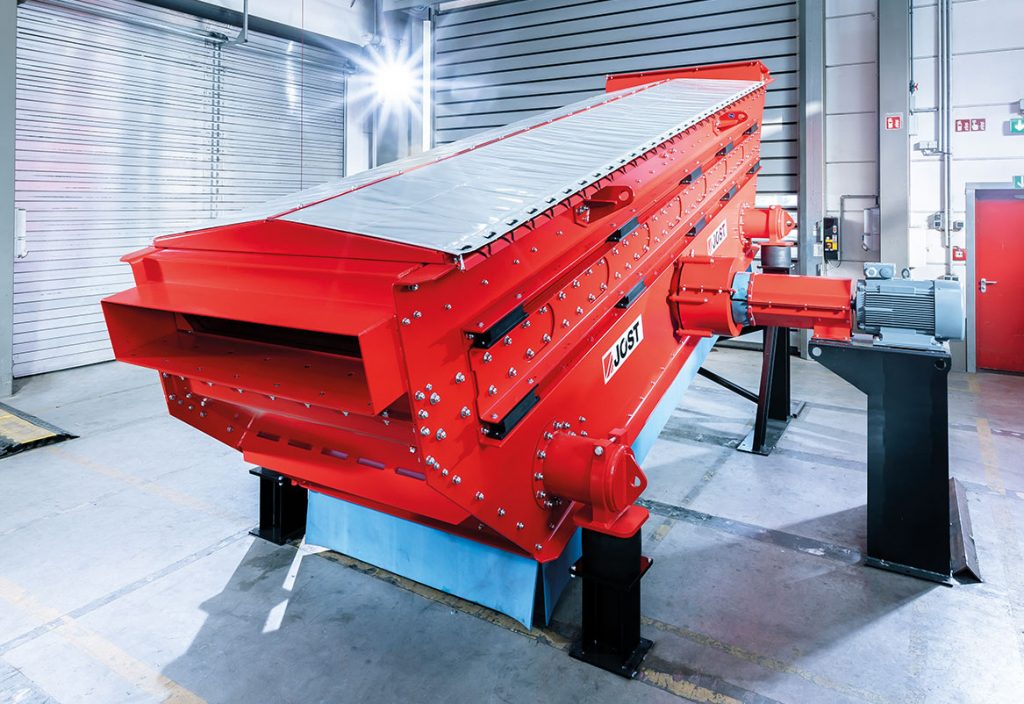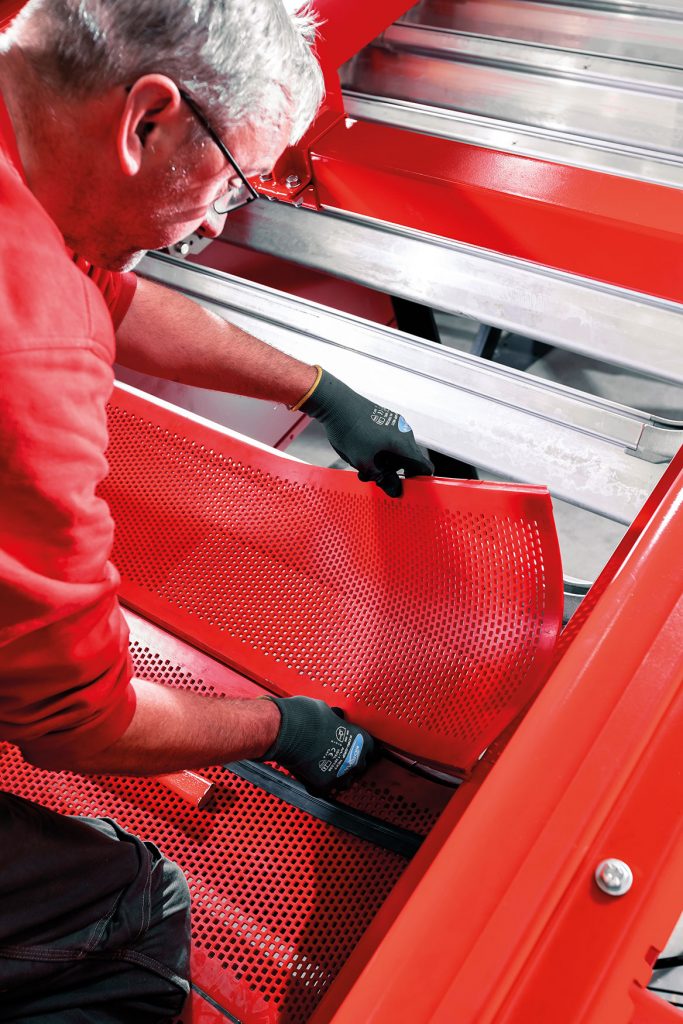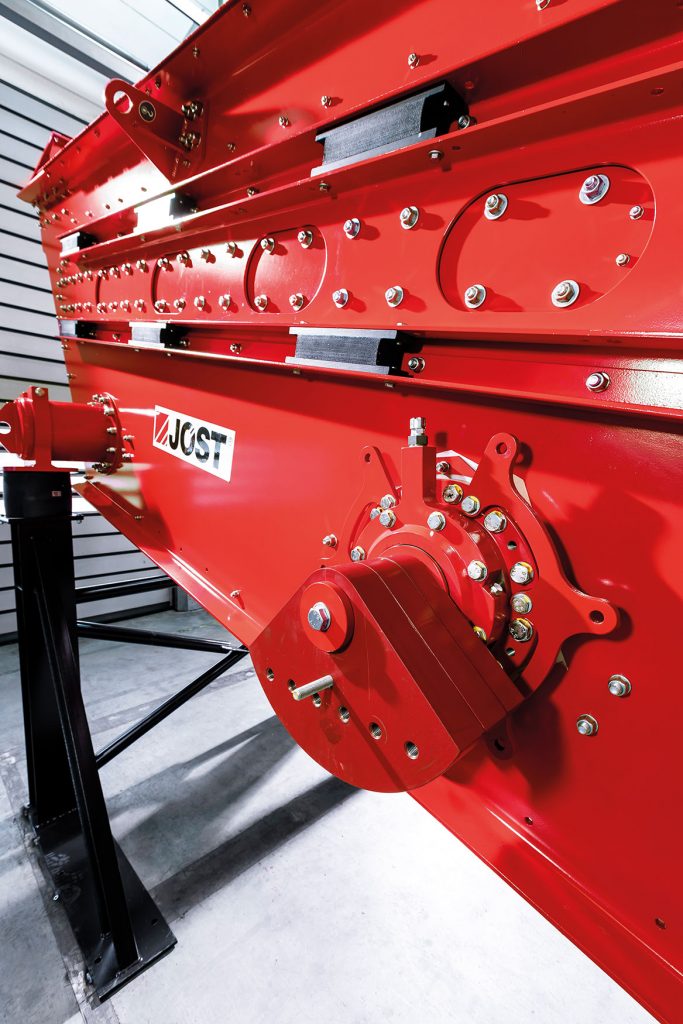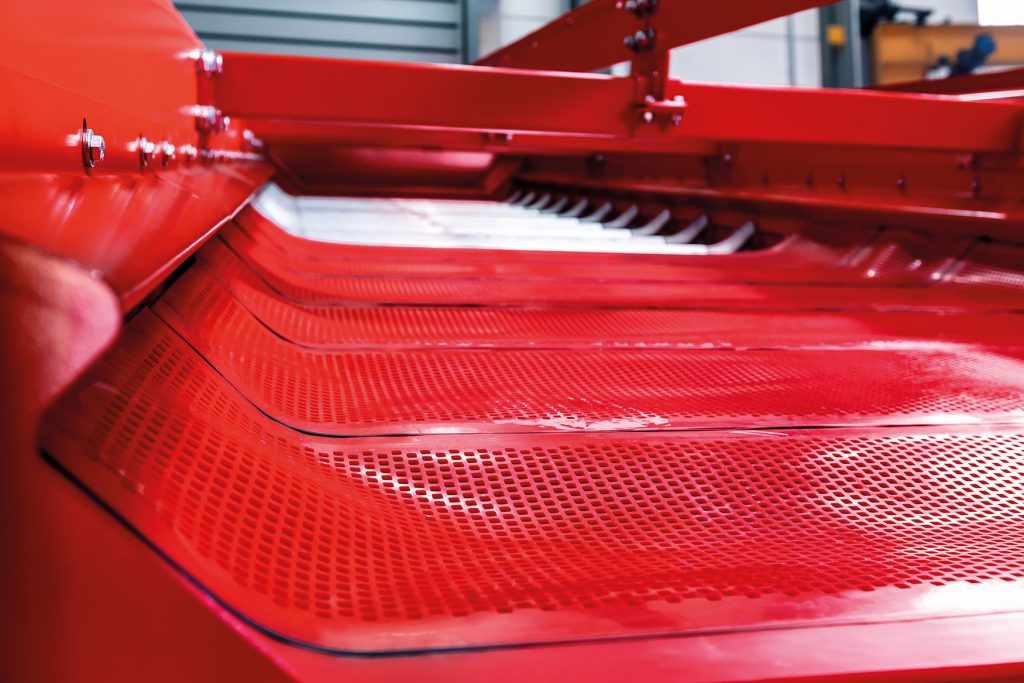PRIMARY RAW MATERIALS, SECONDARY RAW MATERIALS
The „new“ OSCILLA generation – continuing the story of success

On its 100th anniversary, JOEST presents a Flip-Flow update with minimal maintenance and less installation effort
General:
The well-proven JOEST Flip-Flow Screen OSCILLA is the ideal solution for classifying hard-to-screen bulk materials. Due to the simple operation and high screening efficiency, OSCILLA Screens have been a great success on the market. Extremely demanding applications with wet or inhomogeneous materials are screened with the Flip-Flow Screen by JOEST. The 2019 OSCILLA generation has been optimized even further with innovative solutions regarding Opex and Capex.
Operation:
The OSCILLA Technology is based on that of a resonant system in which the dynamic screen frame is excited relatively to the body of the screen as a reaction to the directly excited screen body.
The body of the screen itself is brought into oscillation by a standard unbalance motor or accordingly by a single or double shaft drive. As a consequence, the dynamic frame performs a linear motion relative to the screen body. The clamped screen mats are attached to the dynamic frame and the screen body via crossbars. As a result of the relative motion of the two systems, the mats are stressed and relaxed. The process is comparable to the effect on a trampoline. This way the particles are accelerated by up to 50 G and the screen mats do not clog.
Application:
OSCILLA Flip-Flow Screens are suitable for the use in the Primary and Secondary Raw Materials industries. The OSCILLA screen is applied in the processing of household and industrial waste, shredder fractions, compost, wood, surrogate fuel, natural stones, ores, minerals and coal. The Flip-Flow Screens are ideal for bulk materials that are hard to screen due to their particle shape, inhomogeneous nature or have a high moisture content. Broken bottle glass is a typical material and contains varying amounts of organic material depending on the country and region. The inlet particle size of an OSCILLA Flip-Flow Screen typically lies between 0 – 80 mm depending on the material´s bulk density.
Advantages:
The JOEST engineers designed the attachment of the screen mats to the cross bars with a special focus on maintenance friendliness: changing the mats is simple and quick. This long proven JOEST design is ideal even for applications with extremely high acceleration values. Additionally, the screening mats are installed very high up at the end of the cross bars to ensure an optimal sealing to the sides while simultaneously ensuring a maximal effective width. The combination of operational safety and efficiency of the useable classifying surface is another JOEST feature.
A big advantage of the OSCILLA Flip-Flow Screen is the high flexibility with the optional JOEST stroke control. The stroke is measured and combined with a frequency converter. That way the relative motion between the dynamic frame and the screen body can be held at a set value.
Especially for machines that are located in an environment with extreme temperature variations, an automatic stroke control enables additional operational safety. The high flexibility is another advantage of a controlled Flip-Flow Screen. Feeding materials with different characteristics (e.g. variations in moisture content due to weather) can be processed by the same device by changing the machine´s parameters.
The “new” OSCILLA
The 2019 generation of the JOEST OSCILLA comes with the usual JOEST quality made in Germany. From a design point of view, the first thing that stands out are the Vibroblocks. These are located between the dynamic frame and the body of the screen. They absorb or pass on the system’s resonant forces. This was JOEST’s answer to client’s request to come up with a robust, simple and cost efficient solution. The Vibroblocks are tested, long living and minimally sensitive to temperature variations. In case they must be change anyway, JOEST’s engineers payed great attention to their easy accessibility and quick service. This is reflected not only in case of services by minimal down times but also in the final assembly of the OSCILLA.
Another innovation by JOEST in terms of manufacturing can be found in the design of the cross members. These are no longer manufactured individually for each machine type. Instead, they consist of specially developed profiles that simply have to be cut to length and fitted with a standard end-plate. Even the attachment points for the Flip-Flow Screen Mats are integrated. This way, the labour intensive alignment and bolting on of the individual parts to the cross members are eliminated.
By leaving out parts on the cross bars there are now also less parts in the material flow that offer potential for wear or material sticking to them. Vibroblocks and cross bar innovations: cost-synergies that JOEST gladly passes on to its clients.
The “new” OSCILLA will be available in the known sizes from 600mm to 2400mm in width and a length of up to 9200mm with an option of a single or multiple deck Flip-Flow Screen. In combination with conventional screen plates in the upper deck, you can get the best of both screening worlds in one application. Furthermore, with the modular design, numerous inlets and outlets can be attached without changing the base construction. For the most part the Flip-Flow screen avoids welding seams. Instead it uses bolts to permanently and securely connect its parts with each other.
The newest product development by JOEST intends to secure the OSCILLA Flip-Flow Screen’s long-life cycle and minimize services. Just in time for its 100th anniversary, JOEST is happy to present its clients with an even more reliable Flip-Flow Screen and is hoping for a successful sales start of the “new” OSCILLA.
Simplifying changing the screen decks: well-thought-out screening mat attachement

Well-proven shaft drive by JOEST

Optimized lateral sealing between mats and screening body at a maximized usable width

If you are interested in a JOEST Flip-Flow Screen OSCILLA, feel free to contact us!
Coverstory and Interview AT Mineral Processing Europe 7-8 >>> here
Weitere Beiträge
As part of the JOEST group, MOGENSEN has been a trusted provider of high-performance screening and sorting technologies for many years. The new website now showcases this expertise more clearly and with a modern touch.
On International Women’s Day, we celebrated the great women in our company who have made a significant contribution every day with their commitment, expertise and passion. Their efforts have been a driving force behind our success and an inspiration to us all.
JOEST South Africa was commissioned to manufacture and supply replacement vibrating feeders for a critical power generation facility. The new units are designed to replace equipment that had been in operation for over 20 years, ensuring the continued reliability and efficiency of the plant.
MOGENSEN joins China’s food security project as an official supplier, supporting the nation’s plans to strengthen domestic grain production capabilities. The appointment by COFCO, China’s largest state-owned agricultural company, includes the deployment of multiple precision screening systems for processing rice, wheat and soybeans, among other grains. This long-term initiative is in line with China’s new food security law, which went into effect on June 1, 2024.







